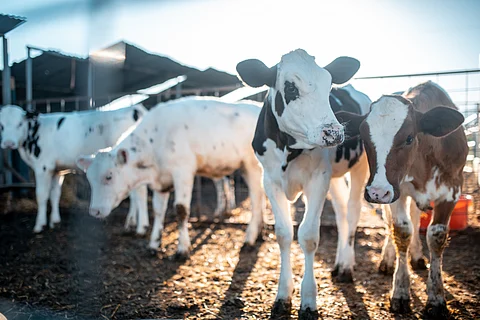

Highly pathogenic avian influenza (HPAI) H5N1 can spread through the air in milking parlours, the exhaled breath of cows and contaminated wastewater, researchers have found.
The findings, published on the preprint server bioRxiv by scientists from Emory University, suggest that airborne and waterborne transmission could be key routes for the virus on dairy farms.
The clade 2.3.4.4b B3.13 strain of H5N1 was first detected in dairy cattle in California in March 2024 and has since spread to 17 US states, affecting more than 1,000 herds. According to the US Department of Agriculture’s Animal and Plant Health Inspection Service, 1,078 cases have been confirmed, with 771 in California alone.
While direct contact with contaminated milk may contribute to H5N1 spread on dairy farms, aerosol-based transmission cannot be ruled out, the paper said. “Aerosolisation of unpasteurised milk in dairy milking parlours is likely generated during expression of the first milk, termed forestripping, and other milking procedures.”
Activities within dairy parlours increase the risk of transmission via direct contact with mucus membranes and contamination of surfaces as particles settle out of the air
Surveillance on California dairy farms reveals multiple sources of H5N1 transmission
The researchers also identified wastewater as a source of infection. Milk from cows with mastitis or other infections, which is not sent for commercial processing, is often discarded into water used for farm operations. This water is collected in manure lagoons, and repurposed for irrigation.
Clean water used to spray down milking parlours between sessions was also a potential source of transmission and can produce virus-laden aerosols when repurposed for irrigation.
Sampling at 14 California dairy farms revealed H5N1 in the air during milking and in the exhaled breath of infected cows. Genetic analysis also showed that viral sequences from air and water samples on the same farms often matched and variants with changes to the HA receptor binding site were detected in air samples.
The study warns that multiple transmission pathways — including air, contaminated surfaces and wastewater — increase the risk of spread between cows and potentially to farm workers.
The researchers recommended a series of control measures, including:
Use of respiratory and protective gear for workers.
Disinfection of milking equipment between cows.
Treatment of milk from sick cows to inactivate H5N1 before disposal.
Treatment of wastewater before its reuse in fields or parlours.
Isolation of infected cows, even those without symptoms.
They concluded that identifying and interrupting these transmission routes will be critical to limiting H5N1 spread in dairy herds and reducing the risk to humans.